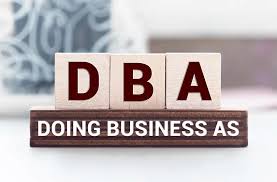One sort of thrift business that showcases items for a cut of the final sale price is the consignment store. Participants in this retail model bring in goods and receive payment upon the sale of those goods. Clothing, housewares, artwork, furnishings, and even books are all fair game for consignment stores. Having said that, clothing is where it’s at. The essay delves into the background of consignment online stores and explains how they work and vary from thrift stores.
What Is a Consignment Store?
Businesses often act as consignors in consignment models, selling goods on behalf of their owners. To attract motivated consumers, consignment stores often focus on selling specific products. A consignor supplies items to a consignee, who is then responsible for warehousing, inventory management, and other sales-related duties. The recipient gets either a set amount or a portion of the sale price as compensation.
Companies that Deal in Consignment
Auction houses, import firms, and any service that involves the transfer or sale of items by third parties sometimes engage in consignment as a business model.
Consignment stores that target consumers often include thrift stores and second-hand shops. The use of consignment by merchants as an additional channel for resale is on the rise.
One example is Zara’s consignment website, where customers may find vintage and previously owned products.
Products Frequently Sold on Consignment Stores
Products that are hard to find, used, or intended for resale often find success at consignment sales. Common types of products sold on consignment include:
- Apparel and footwear
- Sportswear and accessories
- Baby gear and playthings
- Precious metal artifacts
- Home Furnishings
- Instruments for performing music
- Fine art rostrum
Consignment Store Online
With any luck, this list of the top online consignment stores will help you narrow down your search for the perfect vintage store and introduce you to the delights of the circular economy.
#1. Poshmark
One of the most popular consignment stores online and a social e-commerce platform for buying and selling clothing, accessories, and home products is Poshmark, which has more than 80 million registered users. In addition to streamlining the consignment procedure, this intuitive platform facilitates the creation of eye-catching listings, the management of orders, shipping, customer communication, and more. (It’s a great venue for reselling!)
#2. Vinted
With more than 45 million members, this online consignment store is the largest online community for pre-owned goods in the world. Listings for children’s and adults’ apparel, accessories, household goods, and pet supplies can be quickly and easily created by consignors with the help of product images and thorough descriptions.
Consignors have access to secure, intuitive software, visibility, seller protection, and clear pricing on the platform.
#3. RealRea
Online marketplaces for the resale of high-end goods include RealReal, among others. By providing a worldwide community with access to verified premium consignments, it aims to assist the luxury business in reducing its environmental impact.
Using the platform, consignors have the option to send their high-end goods via mail or arrange for a free in-home pickup in some areas. RealReal’s streamlined process handles everything, including authentication, pricing, and listing the items for sale.
#4. ThredUp
ThredUp is a consignment online store that sells pre-owned apparel for kids and women. This website serves as a one-stop shop for vintage clothing, accessories, and shoes, offering brands ranging from “Gap to Gucci.”
If a consignor would like to submit their things to thredUp for inspection, they can order a clean-out kit. This kit includes a pre-paid mailing bag. From categorizing and pricing products to taking photos and advertising them for sale, the platform takes care of it all.
#5. The Stillwhite
People who want to sell their wedding dresses can find a dedicated platform at StillWhite. Stillwhite aims to disrupt the typical one-time use of wedding dresses by providing an online marketplace where buyers and sellers can find new homes for their beloved garments
How Consignment Store Work
In a consignment store, the owner (the consignee) works in tandem with the people whose goods are offered for sale (the consignors). The usual starting point is the consignment business, where the individual wishing to sell their belongings brings them.
Clothes, accessories, furniture, artwork, and other items are all fair game. After that, the consignment shop evaluates the products’ quality, condition, and potential sale value. Once it passes the shop’s inspection, the two of you will sign a consignment agreement that specifies the parameters of your collaboration (the specifics of which will vary from store to store, so read the fine print).
The consignment business will handle the item preparation once the agreement is made. Improving the objects’ marketability can involve cleaning, fixing, or styling them.
The proprietor of the consignment business decides how much to charge for the products after evaluating variables like the item’s condition, brand, and demand, which can take place either in-person or online. The consignment shop advertises and sells products.
The consignment store retains a percentage of the final sale price as payment for their services. The consignor receives the remaining sum. Before accepting products for sale, consignees evaluate certain aspects of the product:
Market segment. The majority of consignees have strict brand, category, or line requirements.
Goods that sell well. When evaluating product supply, consignees give priority to items that are in high demand and sell quickly.
Excellent quality of the product. The consignee’s ability to take on damaged goods depends on their area of expertise.
Items that are carried by the season. Receiver expertise in customer demand fluctuations is common among consignees.
Who Owns the Products During Consignment?
Until the consignee sells the goods, you usually keep ownership in a consignment agreement. This is different from the typical business model in which a retailer buys things and subsequently sells them to consumers.
Advantages of Consignment
There are a number of advantages to consignment for both parties involved:
Pros for Consignors
- You don’t need a storefront. There is no requirement to open an internet business or post ads on marketplaces when you sell on consignment.
- Absolutely no advertising or marketing. A marketing plan is unnecessary for consignment shops because their customers find them on their own.
- Effectiveness in logistics. In most cases, the consignee will be in charge of shipment, delivery, and, in certain cases, even collection.
Benefits For Consignees
- Money flows more smoothly. Anything that doesn’t sell can be returned to the consignor, and the consignee doesn’t have to pay for the inventory. The buyer can decide how and when to pay for the products once they sell.
- Create an enthusiastic group of buyers. A motivated and returning customer base can be attracted to consignees who are known for sourcing popular commodities.
Disadvantages of Consignment
Considering these advantages, let’s look at some possible disadvantages of the consignment model:
Cons for Consignors
- Significant costs. It is possible to earn more money selling directly to customers rather than through consignment. High commissions are common in consignment stores.
- Postponed payment. Long payment delays are a term that consignors must accept.
- Distant from the target audience. Collecting sales statistics or customer information might not be feasible while consigning.
Downsides for Consignees
- Control over the supply is lacking. In order to maintain a constant supply of merchandise, consignment firms rely on their consignors.
- Managing stock. Receiving parties require adequate storage, organization, and security measures for goods that do not legally belong to them.
Companies That Deal in Consignment
We can learn more about the consignment model by looking at companies that have used it effectively in the past.
#1. Gallery Spaces Showcasing Artwork
A typical setting for an art gallery, complete with patrons perusing the many artworks on display.
One common type of consignment business is art galleries. Galleries are the ones that artists entrust their artwork to, also known as consignees. The galleries, which also handle sales and marketing and receive a commission for each sale, are in charge of showcasing the artwork. Until it is sold, the artist owns the piece.
#2. The Rebag
The homepage of the Rebag luxury consignment store features a Rolex watch and a Chanel handbag.
Rebag is a marketplace that is revolutionizing the consignment paradigm for high-end apparel and accessories. With its versatile features, users may buy and sell items with ease. The platform offers enhanced payouts, item trades, and a buyback plan that allows consumers to return purchases for a credit that can be used towards their next purchase.
#3. RealReal.
One place to find true high-end consignment items is at RealReal.com. From designer apparel and accessories to timepieces and home furnishings, it takes a diverse selection of high-end consignments. Consignors get a cut of the sale price when an item sells through The RealReal, which takes care of all the consignment agreements, pricing, listing, and selling.
#4. eBay’s Consignment
Advertisement banner for eBay’s consignment service featuring high-end handbags as goods sent by customers.
Although it is primarily a P2P marketplace, eBay does provide a consignment service for certain items, such as high-end purses. The platform takes things from sellers, verifies them, lists them, sells them, and then ships them. Instead of making a separate payment to the marketplace, the consignor keeps a cut of the proceeds when an item sells.
Types of Consignment Store
Customers provide the goods for a consignment store’s inventory. The consumer brings in an item they no longer desire, and the store sells it. The customer then receives a portion of the sale price. Store owners can have a supply of new or gently used products on hand with this business strategy, as they don’t have to pay for the goods upfront. Clothing, books, movies, music, and furniture are just a few of the many specialized areas catered to by consignment retailers.
#1. Clothing
While most of the inventory at clothing consignment stores consists of gently worn or new garments, you might also find some shoes, jewelry, and accessories. You may find new and gently used apparel for men, women, and children at general stores. Boutiques and specialty shops cater to a certain style of apparel. For instance, pre-owned items that are in good shape are welcome at vintage boutiques. The only thing that a wedding boutique deals in is pre-owned bridal gowns.
#2. Books
Books Many different types of books are bought and sold in book consignment establishments. Hardcover and paperback books of any genre are typically available in stores. Additionally, you can get audiobooks, writing notebooks, and office supplies in some stores, in addition to general books like textbooks and recipes. Shoppers often peruse the aisles of bookstores in search of new reads. A wide variety of books is key to a successful consignment bookstore’s inventory.
#3. Various Forms of Media
Movies are the specialty of several second-hand shops. Both new and pre-owned DVDs and cassette recordings are available at these shops. Movie posters, soundtrack CDs, and promotional items are all examples of cinema memorabilia that they would be open to accepting. Music is the specialty of several consignment shops, where you may find both new and used CDs and LPs. Music and movies are both sold in hybrid consignment stores that specialize in entertainment. In such shops, you might find DVDs in one section, CDs in another, and a third section devoted to movie and music memorabilia.
#4. Furniture
Furniture Consignment stores might stock a broad variety of pieces or specialize in a certain area of furniture. Used furniture, manufacturer rejects, and unsold inventory from other companies can be found in general stores. Specialty shops attract clients with a compelling offer. An antique consignment shop, for instance, would stock objects from bygone eras that collectors and dealers find desirable.
What Is the Difference Between Consignment and Thrift?
There is a wide range of quality and age in a thrift store, from recently manufactured goods to heirloom pieces passed down through generations. Please do not bring donations to consignment establishments. Once your items are sold, consignment stores will pay you for them. You can expect to earn a portion of the item’s final selling price.
Is Selling to a Consignment Shop Worth It?
The profit split at consignment stores is usually 50/50, so you might not get as much as you would if you sold the products independently. However, because no strangers will be visiting your home, it may be a safer option than selling on Craigslist or in the ads.
What Is the Point of Consignment?
While consignment offers the potential for a higher final sale price, it also comes with a lengthier waiting period and no assurance that an item will sell.
Why Is Consignment Better?
The profit split at consignment stores is usually 50/50, so you might not get as much as you would if you sold the products independently. However, because no strangers will be visiting your home, it may be a safer option than selling on Craigslist or in the ads.
Is It Better to Consign or Sell Clothes?
Both the seller and the store benefit from consignment sales since the products on offer get a lot of attention. As an alternative to hiding their wares in a warehouse, vendors can now showcase their products to potential customers in a market or on store shelves.
What Percentage Do Most Consignment Shops Take?
What, then, is a reasonable % split for consignment in the current market? It is reasonable to split the proceeds 60/40 in favor of the consignor, according to most trade experts. In other words, the consignment store takes home 40% of the sale price and the owner or producer keeps 60%.
- HOW DOES A CONSIGNMENT SHOP WORK?
- BEST PLACES TO SELL CLOTHES: Where & How to Sell Clothes Online and States
- ONLINE CONSIGNMENT: 2023 Best Online Consignment Stores






